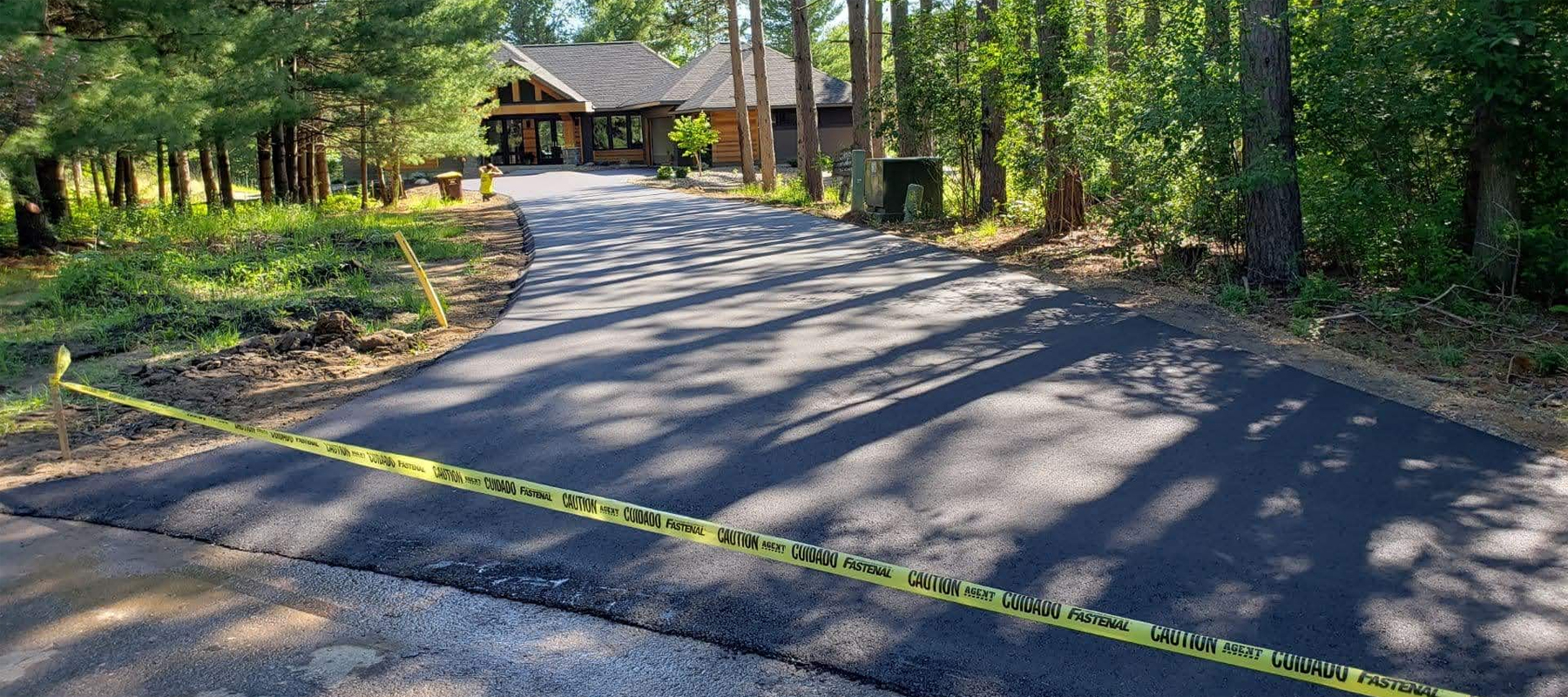What Is an Asphalt Overlay and How Much Does it Cost Per Sq Foot?
Last Updated: June 01, 2023

Fact Checked By: Ryan Maguire
On This Page
As pavement deteriorates over time or due to a lack of maintenance, there comes a point when it seems the pavement has outlived its usefulness and that it is time to break down and rebuild. But this isn't necessarily the case; an asphalt overlay can add years to the lifespan of the pavement. Not only does it fill in existing cracks and flaws, but it gives you a new appearance for a lower cost.
What Is an Asphalt Overlay? #
An asphalt overlay is a new layer of asphalt applied to the surface of a deteriorating pavement structure. Instead of tearing up the original asphalt surface, the overlay uses the existing layers as a base for the new pavement. For surfaces with severe damage, milling is required before an overlay can be applied.
There are four steps in the asphalt overlay process:
- Assessment: Not every pavement structure is suitable for an asphalt overlay. Extensive damage (potholes, ruts, etc.) or an inability to properly drain water require that the original asphalt be ripped up.
- Milling: Asphalt milling involves removing the top layer of the asphalt surface that has taken damage to make sure that the new asphalt can bond properly and stay level. Depending on the wear of the surface, a milling machine grinds down 1" to 3" and the surface material is hauled off to be recycled.
- Base repair: To ensure that no major problems pop up, the base of an asphalt surface may require replacement where damage such as rutting or sinking have occurred. The base is rebuilt with a combination of aggregate and asphalt.
- Surface paving: After the assessment and any necessary milling or base repair is completed, the asphalt overlay is ready to be applied. The thickness of the overlay depends on the thickness of the existing surface, but tends to range between 1.5" and 2".
How Much Do Asphalt Overlays Cost? #
The price of asphalt overlays varies based on how much work needs to be done and how much area you need covered. Typically, the larger the surface area, the lower the cost per square foot.
- The cost of an asphalt overlay for a driveway averages between $2 and $5 per square foot. Total costs average between $2,000 and $5,800
- The cost of an asphalt overlay for a standard, 50,000 square foot parking lot averages between $1.25 and $1.70 per square foot for a 1.5" to 2" thick overlay
Remember that just because the prices are lower for an asphalt overlay doesn't mean that it is the best decision. If your asphalt is severely damaged it will need to be replaced, whether you add an overlay or not.
Difference between an Asphalt Overlay and Asphalt Sealcoating #
Applying a sealcoat and paving an asphalt overlay are two very different things. While sealcoating can fill shallow cracks, it is more akin to adding another coat of paint to a house. A sealcoat helps to protect against severe weather, water damage, and wear, but it doesn't replace anything. An asphalt overlay actually replaces the top layer of your pavement and gives you a new surface.
Sealcoats are primarily used as a way to maintain asphalt, providing a protective layer that keeps it strong in the face of the elements. Overlays are used when a sealcoat doesn't cut it and the surface must be replaced. However, you can apply a sealcoat to your asphalt overlay once the full 6 to 12 month curing period has ended to keep it safe.
Concrete Asphalt Overlay #
An asphalt overlay does not necessarily have to be applied to an existing asphalt surface; in some cases it can be done over concrete pavement. Unlike asphalt, when a concrete surface begins to deteriorate there isn't an easy way to repave it without ripping up the surface entirely. An asphalt overlay can provide a simple fix, however there are some things to keep in mind.
Concrete is different than asphalt. It does not compress the way asphalt does or have as much give. Rather, concrete fills voids and irregularities, with the harder surface requiring expansion joints to prevent cracking. When you apply an asphalt overlay to concrete, those joints cause the asphalt to shift overtime, which creates cracks and bumps. While this doesn't cause the surface to fail, regular crack maintenance and sealing must be performed in order to maintain a resistance to moisture.
